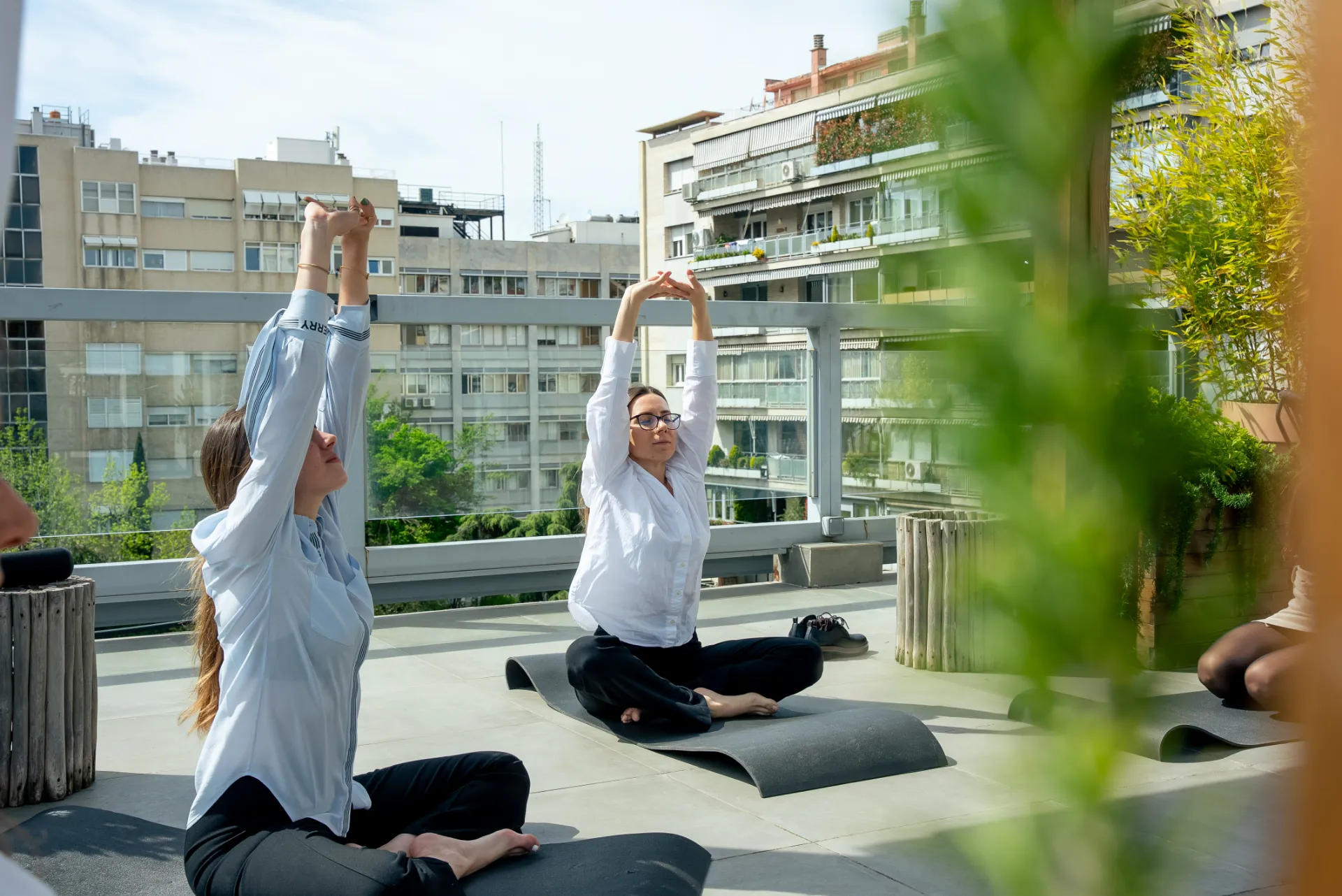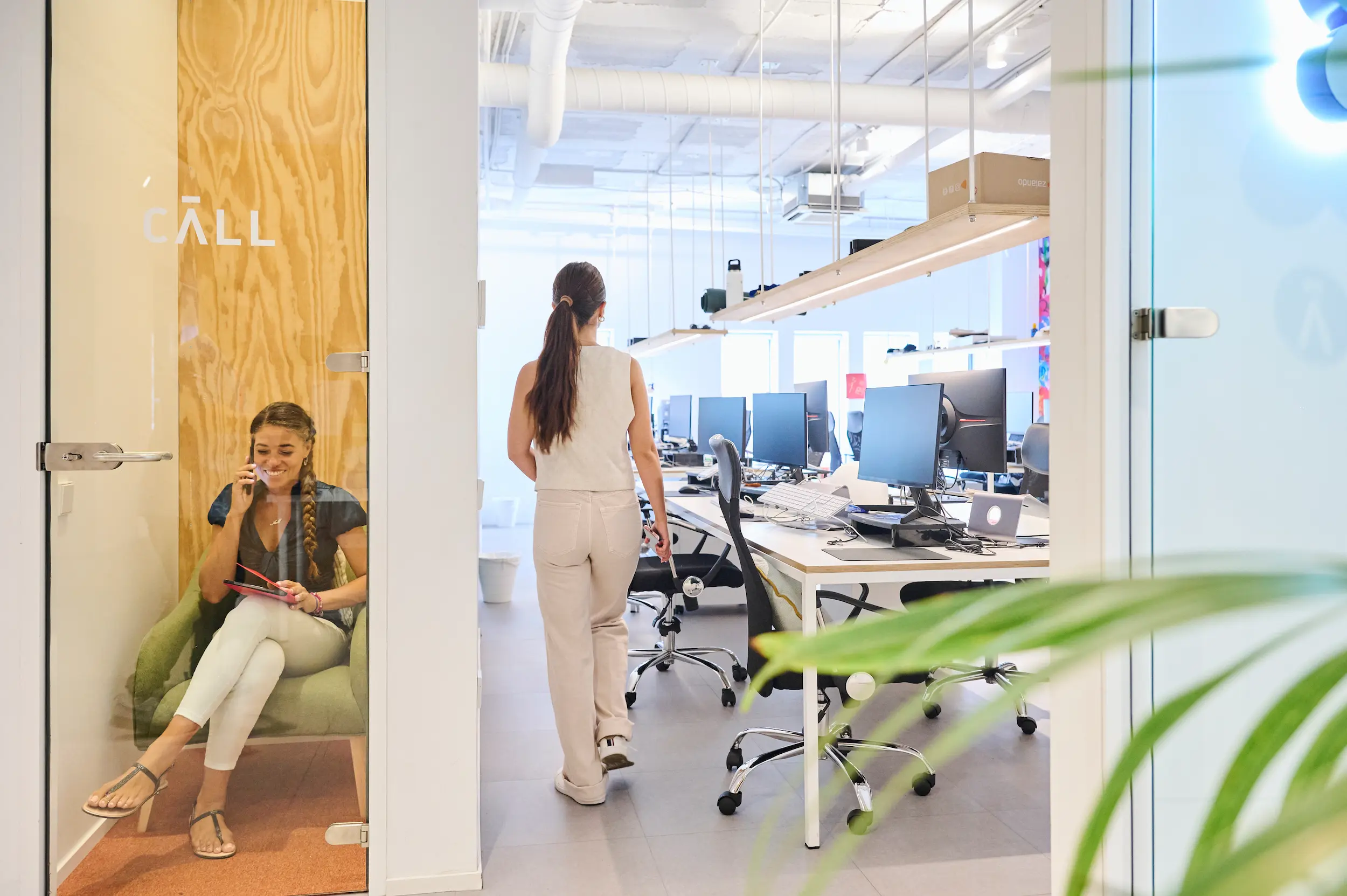Mindfulness at work: how to reduce stress and improve productivity

We live in a fast-paced world, where notifications, meetings and to-dos are constantly competing for our attention. At Aticco, we believe that innovation lies not only in technology, but also in the way we take care of people. For this reason, we are committed to a more human vision of work, where the mindfulness in the work environment plays an essential role.
In our coworking spaces, designed to boost well-being and productivity, we encourage practices such as mindfulness so that people can reconnect with themselves, reduce stress and make decisions with greater clarity.
What is mindfulness and why is it useful in the workplace?
Mindfulness is the ability to be present in the present moment, consciously and without judgment. Applied to the workplace, it allows professionals to focus on one task at a time, reduce emotional reactivity and improve their relationship with stress.
Unlike multitasking, which scatters the mind and drains energy, mindfulness promotes deep focus, helping to avoid mistakes, improve the quality of work and maintain a calm attitude even under pressure.
Benefits of mindfulness at work
Innovative companies are already integrating mindfulness programs for mindfulness programs for employees as part of their corporate culture. Some of the most prominent benefits include:
- Reduction of work stressby training the mind to observe without reacting immediately, anxiety levels are lowered.
- Increased concentration and mental clarityhelps to prioritize and make more effective decisions.
- Improved labor relationsencourages active listening and empathy.
- Increased productivityby working with greater presence and less dispersion.
- Burnout preventionpromotes conscious pauses that recharge energy.
Strategies for practicing mindfulness in the office
Incorporating mindfulness into the workday does not require major investments or radical changes. Here are some simple strategies:
- Conscious pausesDo a couple of minutes of deep breathing between tasks.
- Meetings begin with a minute of silence: to focus the team's attention.
- Design of quiet spacesas the ones we offer in Aticco to disconnect and recharge energies.
- Encouraging digital disconnectionAvoid using cell phones during breaks or key meetings.
Practical mindfulness exercises to reduce stress
Here are some easy practices that anyone can do at their desk:
- Conscious breathingClose your eyes and focus on your breathing for 3-5 minutes.
- Body scanning: bringing attention to different parts of the body to release tensions.
- 5 senses techniqueThe following are some of the most important aspects of the mind: observing an object, listening to nearby sounds, noticing physical sensations, identifying smells and tastes. This helps to anchor the mind to the present.
How to foster a mindfulness culture in companies
For mindfulness to really transform the work environment, it is key that the organization integrates it as part of its culture. Some actions can be:
- Offer workshops or training in mindfulness at work..
- Include mindfulness practices in the onboarding of new employees..
- Having spaces designed for wellbeing such as those we offer at Aticco, adapted to the new generations and the values of the most innovative companies.
At Aticco, we believe that working better also means living better. That's why our spaces are designed not only to foster collaboration and networking, but also to facilitate a healthier, more conscious and balanced lifestyle.
Interested in creating a more conscious and productive work environment for your team? Discover what you can achieve in a flexible space like the ones at Aticcowhere well-being goes hand in hand with innovation.
Frequently asked questions about Mindfulness at work
How does mindfulness help improve concentration at work?
Mindfulness trains the mind to focus on a single task, which reduces dispersion and improves efficiency. This translates into greater mental clarity and more conscious decision making.
What simple mindfulness techniques can be applied in the office?
Some easy techniques are deep breathing, mindful pauses, body scanning, and using sensory anchors (such as a cup of tea or relaxing music) to reconnect with the present moment.


